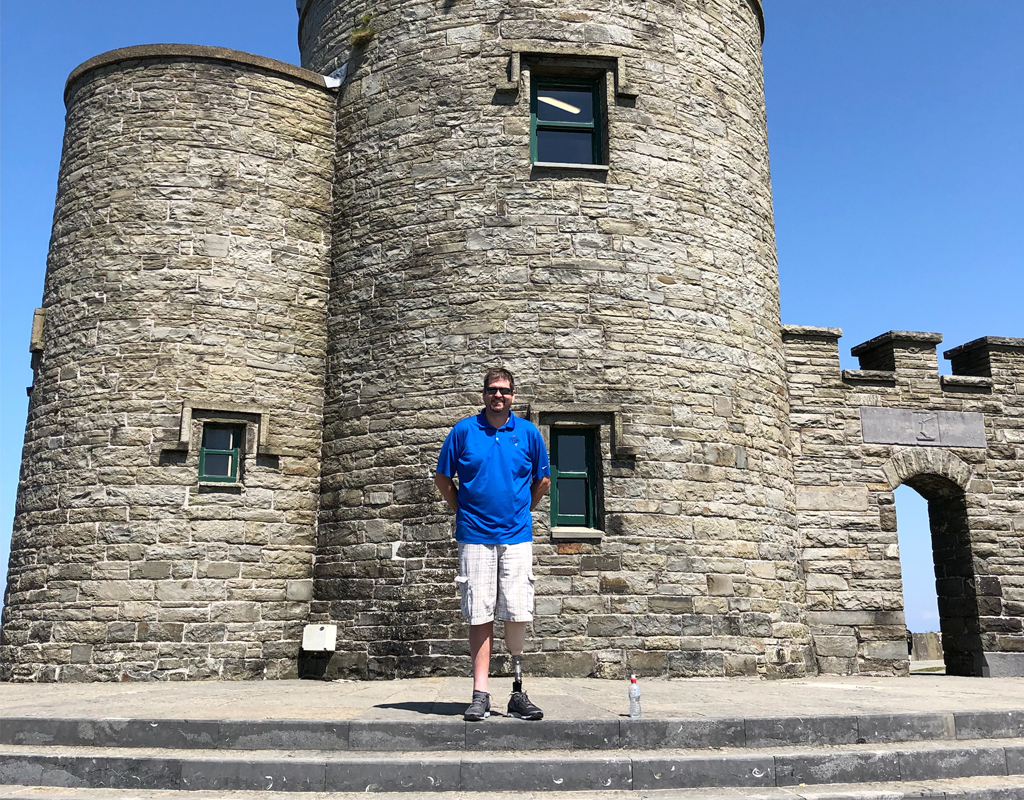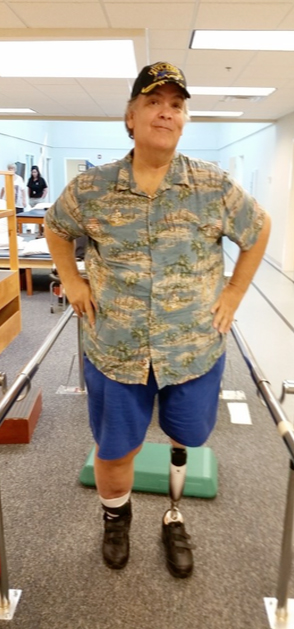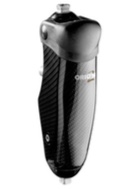Brian Donnellan has always been active, but two years ago he was hit with the  news that his leg would need to be amputated below the knee. Over the past two years he has been partnering with Abilities In Motion to achieve his goals of an active lifestyle.
news that his leg would need to be amputated below the knee. Over the past two years he has been partnering with Abilities In Motion to achieve his goals of an active lifestyle.
This past month, Brian took a two week European trip with stops in Ireland and Italy. “This was the best trip ever, because I got to do everything that I wanted to do,” said Brian. He also shared some pro tips with us about traveling with a prosthesis:
- GET A TUNE UP. A few weeks before traveling, Brian made an appointment to see the experts at Abilities In Motion. They were able to check his prosthesis and were able to make adjustments before he traveled. Brian was also fitted with a swim leg*, which is a secondary device that is waterproof. This helped Brian use smaller showers that are typical when traveling internationally.
- GIVE YOURSELF EXTRA TIME AT TSA. We have all been told to arrive early and allow extra time to get through security, but this is especially true when wearing a medical device. Brian strongly recommends using the handicap line when going through TSA. Brian also chose to wear shorts to make inspecting his leg easier.
- CHECK AN EXTRA BAG. According to Air Carrier Access Act (ACAA), a suitcase that contains only “assistive devices” are exempt from checked bag fees. You will want to notify the agent that your bag contains such equipment and will likely be asked to open the bag to verify its contents. Remember, baggage can be misrouted or lost during travel, so it is important to make sure you carry on your most important equipment and supplies.
- ASK FOR EXTRA LEG ROOM. Brian asked his airline for extra leg room to help accommodate his prosthesis. The airline responded to his request, and because he was comfortable assisting in the event of an emergency, this allowed him to sit in an exit row. During a longer flight, this extra room can be invaluable.
 During his trip, Brian was able to enjoy the Cliffs of Moher. “I felt comfortable the entire time. My wife was a little concerned that I was standing on a 1,000 foot cliff, but it was easy,” says Brian. He was also able to walk though the Coliseum in Rome and walked for miles on his trip.
During his trip, Brian was able to enjoy the Cliffs of Moher. “I felt comfortable the entire time. My wife was a little concerned that I was standing on a 1,000 foot cliff, but it was easy,” says Brian. He was also able to walk though the Coliseum in Rome and walked for miles on his trip.
“I just proved to myself that I can do whatever I want to do, and nothing is holding me back now.”
HEAR THE INTERVIEW HERE:
Please note, the information contained in this post is based on this individual’s experience. Individual situations vary. We recommend that you do your own research to fully comply with TSA and airline policies and restrictions.
Additional Information from TSA:
EXTERNAL MEDICAL DEVICES:
https://www.tsa.gov/travel/security-screening/whatcanibring/items/external-medical-devices
DOT, Guide: Air Travelers with Developmental Disabilities:
https://www.transportation.gov/sites/dot.gov/files/docs/Developmental_Disabilities_Guide_0.pdf
*Swim Leg: Standard prosthetic legs are not able to be exposed to water because of some components are not waterproof. Swim legs are designed for swimming, bathing and other aquatic activities. They are typically not covered by insurance, but Abilities In Motion works to help accommodate patients with affordable solutions when necessary.



 Rodney Jones first came to Abilities In Motion in the summer of 2013. A truck driver for several years, Rodney was injured while on the job. After several failed attempts to reset his leg for healing, the decision was made to amputate Rodney’s left leg.
Rodney Jones first came to Abilities In Motion in the summer of 2013. A truck driver for several years, Rodney was injured while on the job. After several failed attempts to reset his leg for healing, the decision was made to amputate Rodney’s left leg. As a part of the rehabilitation process, Rodney initially used a prosthesis with a locking knee for 12 months. He then transitioned into using the technologically advanced Orion2 knee from Endolite.
As a part of the rehabilitation process, Rodney initially used a prosthesis with a locking knee for 12 months. He then transitioned into using the technologically advanced Orion2 knee from Endolite.